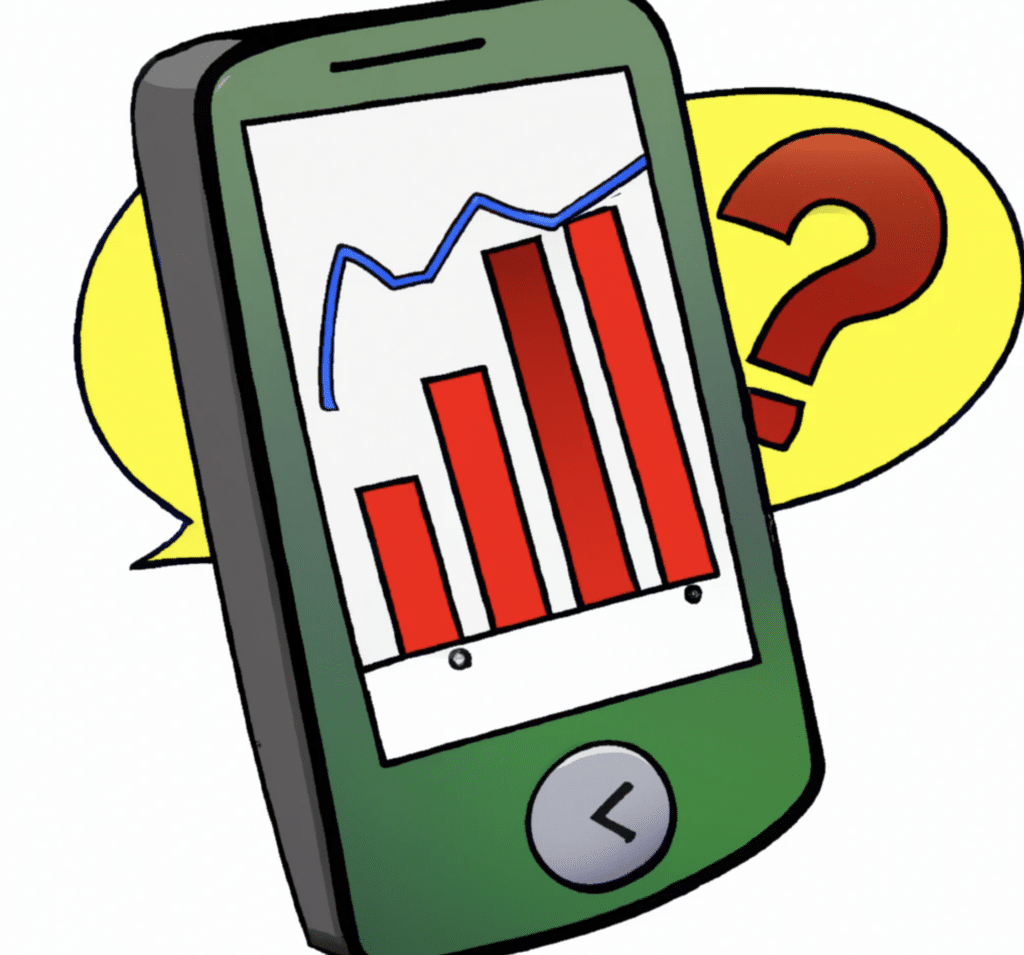How to analyse Stock Charts on a Trading App
Hello, dear reader! If you’ve ever opened a trading app and felt overwhelmed by the colorful lines and numbers, you’re not alone. But fear not! This guide is designed especially for you to simplify those stock charts. Let’s get right into it!

1. Understand the Basics
First things first, you need to get familiar with the basics:
- Candlestick Chart: This is your go-to chart. Each ‘candle’ shows the opening, closing, high, and low prices for a specific time frame.
- Volume Bars: Located usually below the main chart, these bars show the number of shares traded. Bigger bars? More trading activity.
- Moving Averages: These lines smooth out price data to show a trend over time. Common ones are the 50-day and 200-day moving averages.
2. Identify Trends 🚀
Stock charts are all about spotting trends. Here’s how you can look at them:
- Uptrend: Higher highs and higher lows. The stock is on the rise!
- Downtrend: Lower highs and lower lows. Maybe it’s time to reconsider your chosen stock?
- Sideways Trend: Prices move within a horizontal range. It’s a waiting game.
3. Recognize Patterns
Patterns allow you to predict future price movements. Some popular ones include:
- Head and Shoulders: Indicates a reversal of the current trend.
- Double Top and Bottom: Shows a strong level of support or resistance.
4. Use Technical Indicators
These are mathematical calculations based on historical price, volume, or open interest. For you to be a pro, here are some you can look at:
- RSI (Relative Strength Index): Measures the speed and change of price movements. Above 70 is overbought, and below 30 is oversold.
- MACD (Moving Average Convergence Divergence): Shows the relationship between two moving averages.

5. Practice Makes Perfect
Before making any decisions, practice! Most trading apps offer a demo or paper trading feature. Use it! Learn from your mistakes and refine your strategy.
Common Chart Patterns
| Pattern | Description | Bullish/Bearish |
|---|---|---|
| Double Top | Resembles the letter ‘M’. Indicates a reversal after an upward trend. | Bearish |
| Double Bottom | Resembles the letter ‘W’. Indicates a reversal after a downward trend. | Bullish |
| Triangle | Prices move within converging trendlines. | Can be both |
Remember, analyzing stock charts is as much an art as it is a science. The more you practice, the better you’ll get. And always, always do your own research. Happy trading! 🎉